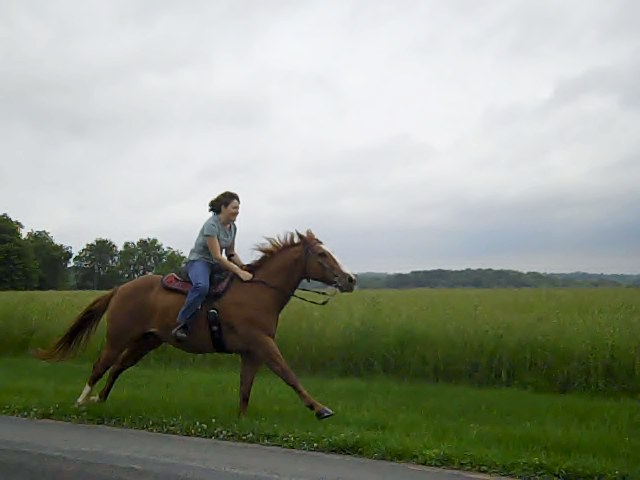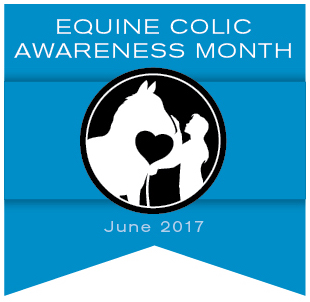Author: Jill Collins
 Rusty’s story goes back three years when he was 18 years old. Having always been a healthy horse with what I would consider a ‘strong belly’, Rusty had never exhibited any clinical signs of colic in all the years I had owned him to that point.
Rusty’s story goes back three years when he was 18 years old. Having always been a healthy horse with what I would consider a ‘strong belly’, Rusty had never exhibited any clinical signs of colic in all the years I had owned him to that point.
One day, I got a call from the barn and was told Rusty looked uncomfortable and was not interested in eating. By the time I got to the barn, he was indeed not right and didn’t look his usual, very energetic self. The vet was called while I was en route and arrived shortly after I did, to find me hand walking Rusty around the arena. He examined him and listened for gut noises in his belly. He had none, indicating a definite colic issue, possibly an impaction. He tubed him with warm water and mineral oil, and also administered Banamine intravenously. After about 2 hours, Rusty perked up, was interested in eating again and passed manure. We blamed it on the strange weather at the time and counted ourselves lucky.
Two weeks to the day later, I got the same phone call from the barn. Rusty was down again and very uncomfortable. The vet was called again and I arrived a bit later to find him working feverishly on Rusty. It was bad, and not getting any better. After a full exam, medications, and many bags of intravenous fluids pumped into him, it was decided the only chance my horse had was to get him to a hospital. We were given directions to take him to a hospital two hours away where they would be waiting for us.
We arrived to find a team of folks ready to get working on Rusty. By the time we got him there and off the trailer, his belly had bloated out so far that he looked 11 months pregnant. His legs were shaking and he whinnied in obvious pain.
They whisked him into an exam stall and did a bunch of tests. About 20 minutes later, the vet came out and said only surgery could save him, based on a bad abdominal tap test and other indications. The suspicion was strangulating lipoma, but surgery was the only way to confirm – and save his life.
A strangulating lipoma is a fatty tumor that develops in horses over time, outside their intestinal tracts. As the tumor grows, it can actually hang down from the intestinal wall like a ball on a string. Sometimes they can wrap themselves around a loop of intestine, effectively cutting it off. This is what happened to Rusty.
I authorized the surgery all the while wondering how he would come through it at his age and what kind of life he would have. We decided to try though; Rusty was my first horse and a wonderful friend and companion. He deserved a shot.
Rusty was taken to surgery and about 45 minutes later I was called to the operating room. The suspicion was confirmed. I saw my beloved horse lying belly up on a large table. The vet was standing over him, and beside them both was a table where Rusty’s intestines laid. They were completely outside of his body. The vet held up a little turnip shaped object which was the fatty lipoma. He said it had wrapped around a section of Rusty’s small intestine, which cut it off and did not allow anything to pass through.
As a result of the blood supply being cut off from that section of intestine, it was dead and had to be removed. All total, Rusty lost 12 feet of his small intestine. After separating the dead intestine from the living tissue, the vet was able to remove 9 gallons of fetid material that had built up in Rusty’s gut. The two healthy ends of intestine were sewn together and Rusty was closed up. Now we waited to see how he would recover.
I’m happy to say that three years later, you’d never know what this horse went through. He recovered beautifully from his ordeal and we were back to riding on the trails four months after his surgery. He’s better than ever and exhibits absolutely no signs of what he went through. At 21 years of age now, he’s still as energetic and happy as ever, and we’re still going strong on some of the toughest terrain in Pennsylvania. He endured a lot and came through with flying colors. Enough cannot be said about the veterinary team at the hospital and my farm vet who all contributed to making the right decisions in time enough to save Rusty’s life. I’ll always be grateful.
The above picture was taken last year, two years after Rusty’s ordeal. We’re doing what we love to do: go fast!






